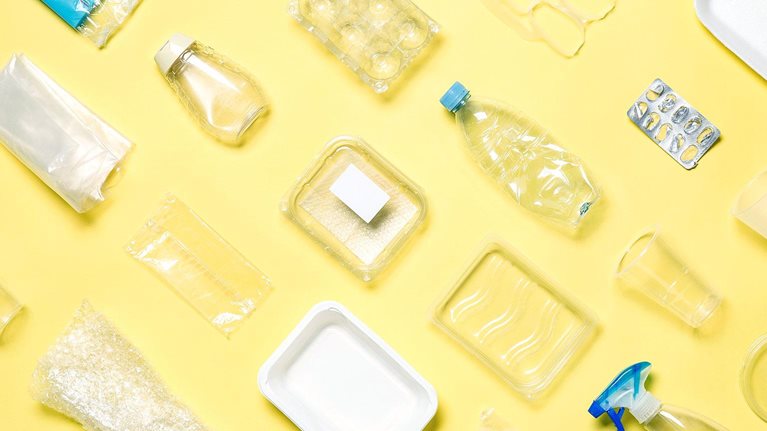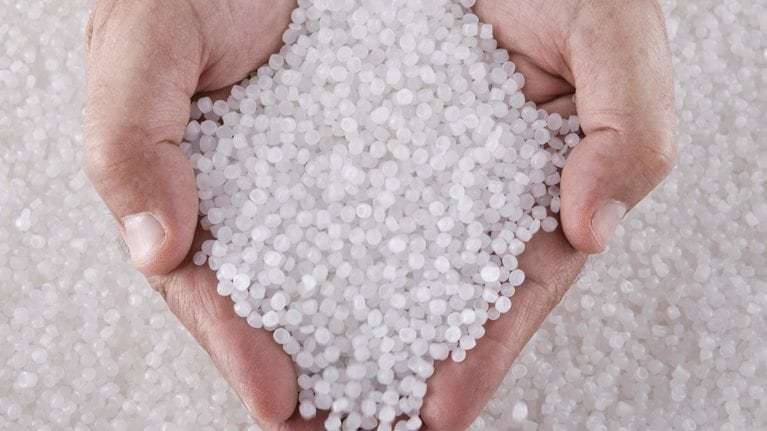Robust demand for circular plastics, in tandem with changing regulations and increasingly bold brand-owner commitments, has led to outsize margins over the past four to five years (see sidebar, “An overview of sustainability in packaging”). With this in mind, the current situation can be seen as a parallel to the start of the previous investment boom in Western petrochemicals, which was linked to commercialization of shale gas in the United States. Then, over the next three to five years, the economics became attractive (in the form of advantaged ethane prices) and investment was announced at scale (in the form of gas cracker final investment decisions [FIDs]).
Nevertheless, for circular plastics to meet demand, investment will be needed across the plastics value chain. On this point, our research shows that achieving 20 to 30 percent of recycled content for plastic packaging by 2030 globally could require as much as $100 billion cumulatively, spanning collection, sortation, and both mechanical and advanced recycling technologies.
Partnerships and collaborations are emerging as important tools in derisking the journey and ensuring progress across the value chain. This includes buy–sell agreements for intermediates (such as pyrolysis oil), new ventures to sort feedstock (such as plastics recovery facilities), and upstream investment by waste management companies.
An industry on the verge of transformation
The US petrochemicals industry in the 2010s can provide a parallel trajectory for the growth of plastics circularity today. Starting around 2009, ethane emerged as a new type of advantaged feedstock, driven by the shale gas revolution (Exhibit 1).

Leading up to 2009, there was a rapid increase in shale production as a result of breakthroughs in horizontal drilling technologies, which created significant amounts of affordable and readily available feedstock. Although this feedstock was advantaged in the United States, there was still some uncertainty around three points: sustained availability at low costs, the ability to use it at scale via greenfield new builds and retrofits, and favorable long-term economics, including oil-to-gas spread and the related economics of polyolefin exports to Asia.
Around 2012 and 2013, following several years of low-cost natural gas and growing confidence in the economics, industry participants announced more than $25 billion in FIDs for crackers. This fundamentally shifted the dynamics of the petrochemical industry, and from 2017 to 2019, a number of crackers came online to process newly available ethane from shale. Several existing crackers were also debottlenecked and retrofitted for ethane and other lighter feedstocks.
Similarly, plastic recycling may have reached a tipping point following four to five years of sustained green premiums and attractive margins. Seven million metric tons per annum (MTPA) of advanced-recycling capacity (including memorandums of understanding and hybrid plants, although not all reached FIDs) has been announced by chemical players as a goal for 2030, with an additional ten MTPA of committed capacity linked to public circular-economy targets. This is driven by the scale-up of disruptors as well as large petrochemical companies entering plastic recycling, often via partnerships.
Notably, market premiums for post-consumer bales have declined in the past few months from levels observed over the past four years. Although the drivers are not fully clear, this decline may be caused by softening demand in some durable plastic end markets and lingering post-COVID-19 supply chain recovery. These changes likely do not imply structural change in the market. In fact, premiums for waste bales and post-consumer resin are expected to return, driven by brand commitments and consumer demand for recycled plastics, supporting the need to further develop plastic recycling.
Investments across the value chain to meet demand
When scaling ethane crackers, upstream investment in unconventional drilling (which led to the production of shale gas) as well as new ethane pipeline development (which helped transport the ethane) were needed in parallel to building new crackers. Ultimately, this helped ensure that there was sufficient feedstock that could be produced and transported to the newly announced ethane crackers on the US Gulf Coast.
Similar investments are needed upstream in plastic recycling, namely in the collection, sortation, pretreatment, and aggregation of feedstock. Our research shows that under most optimistic scenario global demand for high quality recycled content in packaging may reach 40 MTPA by 2030 in case all brands across the world follow and successfully fulfill commitments to use 20 to 30 percent recycled content in plastic-packaging applications. This would require approximately 67 MTPA of incremental collection and sortation capacity and total of $100 billion investment across the value chain by 2030. However, under more realistic scenario demand for high quality recycled content in packaging more likely to reach 22 MTPA by 2030 with required incremental collection and sortation capacity of 27 MTPA (Exhibit 2) . Across the plastic recycling value chain, investments totaling $50 billion may be needed by 2030 globally to support the scale-up of plastic recycling, about one-third of which will be in feedstock sourcing and preparation, with the remaining two-thirds in building out mechanical and advanced-recycling capacity.

Increasing recycled waste material requires influencing consumer behavior, building out the capacity of materials recovery facilities (MRFs), and improving sortation. This will be dependent on the state of the waste management infrastructure already in place, which differs by geography.1 In developed economies, recyclable waste is typically collected by waste management companies and sorted and cleaned with equipment. By contrast, developing economies often rely on waste pickers for sortation and collection.
Collaborating on and derisking the journey
Value chain partnerships between incumbents and disruptors, between recyclers and upstream feedstock suppliers, and between recyclers and downstream offtake partners have begun to emerge as ways to derisk investments.
Some leading disruptors have derisked by forming partnerships, signing memorandums of understanding, or arranging offtake agreements with large chemical companies. These connections can help disruptors create end products with more security because up-front commercial arrangements can make a stronger business case. For example, disruptors producing pyrolysis oil can secure offtake of their product, while incumbents can use the pyrolysis oil to produce circular plastics associated with a sizable premium. Similarly, waste and chemical companies are entering into joint ventures (JVs) to gain access to waste supply and increase their security in offtake agreements. These JVs can enable incumbents to build new businesses, which can grow independently from core legacy businesses.
Incumbent chemical companies trying to scale their recycling efforts are working together and investing in feedstock preparation assets. For example, LyondellBasell, ExxonMobil, and Cyclyx invested in a first-of-its-kind, $100 million plastic recovery facility (PRF), which has the potential to derisk feedstock access at scale.2 Other companies have moved to vertically integrate supply chains. In fact, some companies, such as Revolution, already control their full supply chains, from initial setup and collection to the processing and recycling of agricultural films.
Moreover, investments are being made to enable access to waste plastics feedstock that is low cost and of consistent quality. Waste management companies are investing in MRF upgrades and waste collection infrastructure to increase access to recycling. Some incumbents, including waste management companies and chemical companies, as well as disruptors, are building out platforms to have a better mechanism to match different sources of waste supply and demand. In addition, companies across the recycling value chain are forming pilots in collaboration with local governments to increase recycling collection and access to feedstock. Although these are smaller in scale than other forms of investment, they also present an option for incumbents and disruptors alike looking to explore paths to increase their recycling.
Overall, these business model innovations, as well as alternative-financing agreements and collaborations, can help reduce the exposure and risk to a single party. And this reduced risk, in turn, can make customers more comfortable investing in premiums for offtake agreements. Especially with recent price volatility, these partnerships could be an increasingly important way to derisk participation models for all parties and support the business case for investment.


